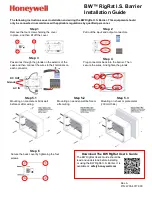
Negative identification numbers are assigned to objects made of ferromagnetic materials
such as iron, steel and nickel. Unfortunately, if these objects are made in the form of sheets –
i.e. they have a small thickness but a large surface, the vortex currents that can be created on
the surface of the object without difficulty will dominate over the magnetic properties. In the case
of ferromagnetic objects their position relative to the search coil strongly affects the identification
- the steel plate in a flat position will be identified in the positive range (because the vortex
currents will have an advantage over its magnetic properties), but the same plate in a vertical
position will be identified in the negative range (the vortex currents are not inducted, but the
magnetic field lines are strongly deflected.)
In the case of objects of non-ferrous metals, the dependencies are simpler: the larger the
object, the heavier the object and the better the conductor - the higher the value.
The identification graph is a graphical representation of the data collected by the
identification circuit while moving the search coil over an object and is stored in the device’s
memory. This feature is unique to this detector, and allows for quicker identification of ferrous
objects than any other method.
If the graph closely resembles a straight or inclined line then an object's composition is
very likely to be of a single material and the digital identification has a high probability of being
correct (a straight line in the range of iron is iron, a straight line in the range of non-ferrous
metals is most probably a non-ferrous metal).
When the graph is clearly bent, curved or spread across the whole of the display, it is
highly probable that you are dealing with an object such as a can, a thin steel sheet or other
steel object whose magnetic properties are lesser than its conductive properties.
RUTUS
Argo NE
7
Содержание Argo NE
Страница 1: ......








































